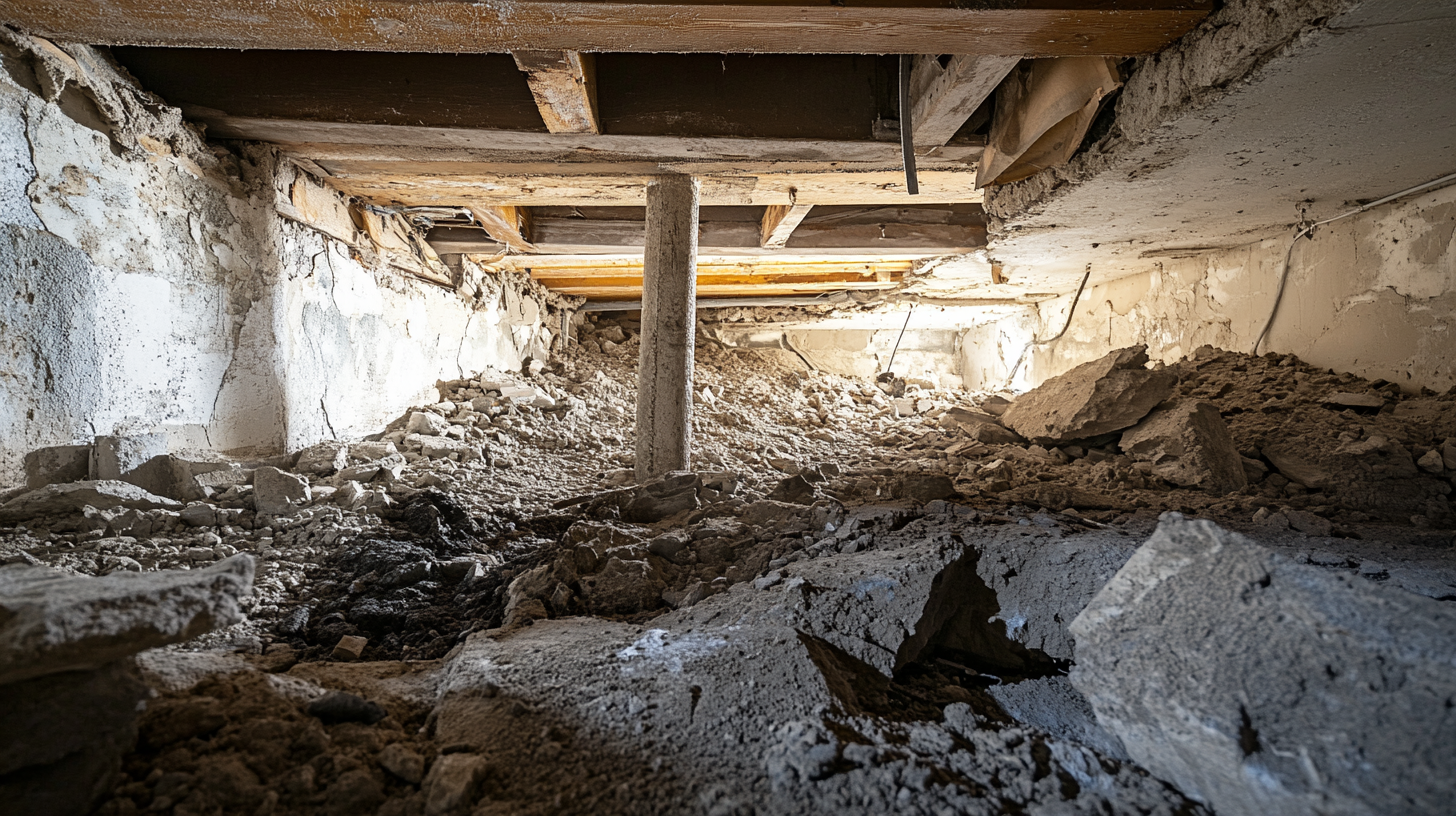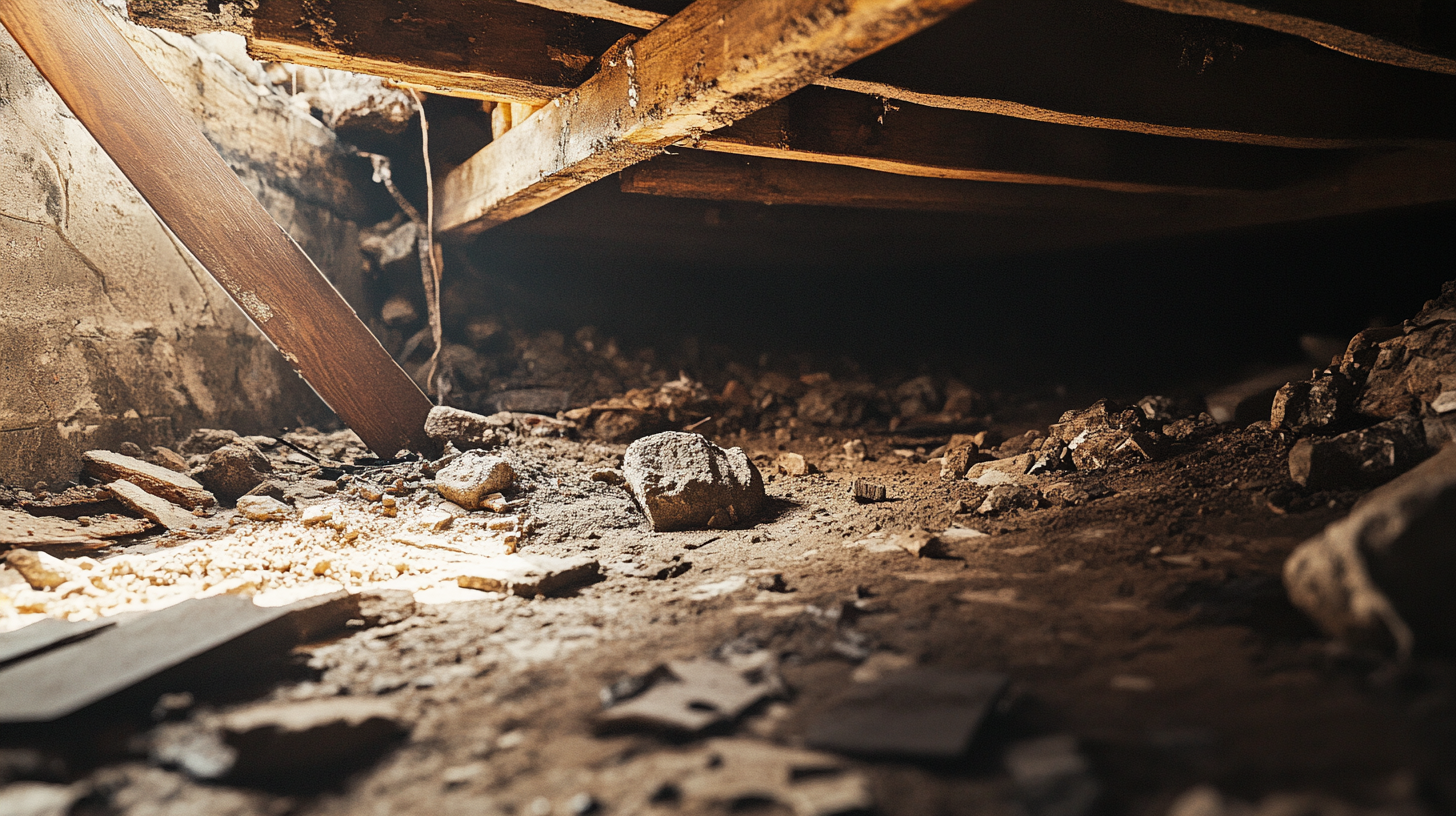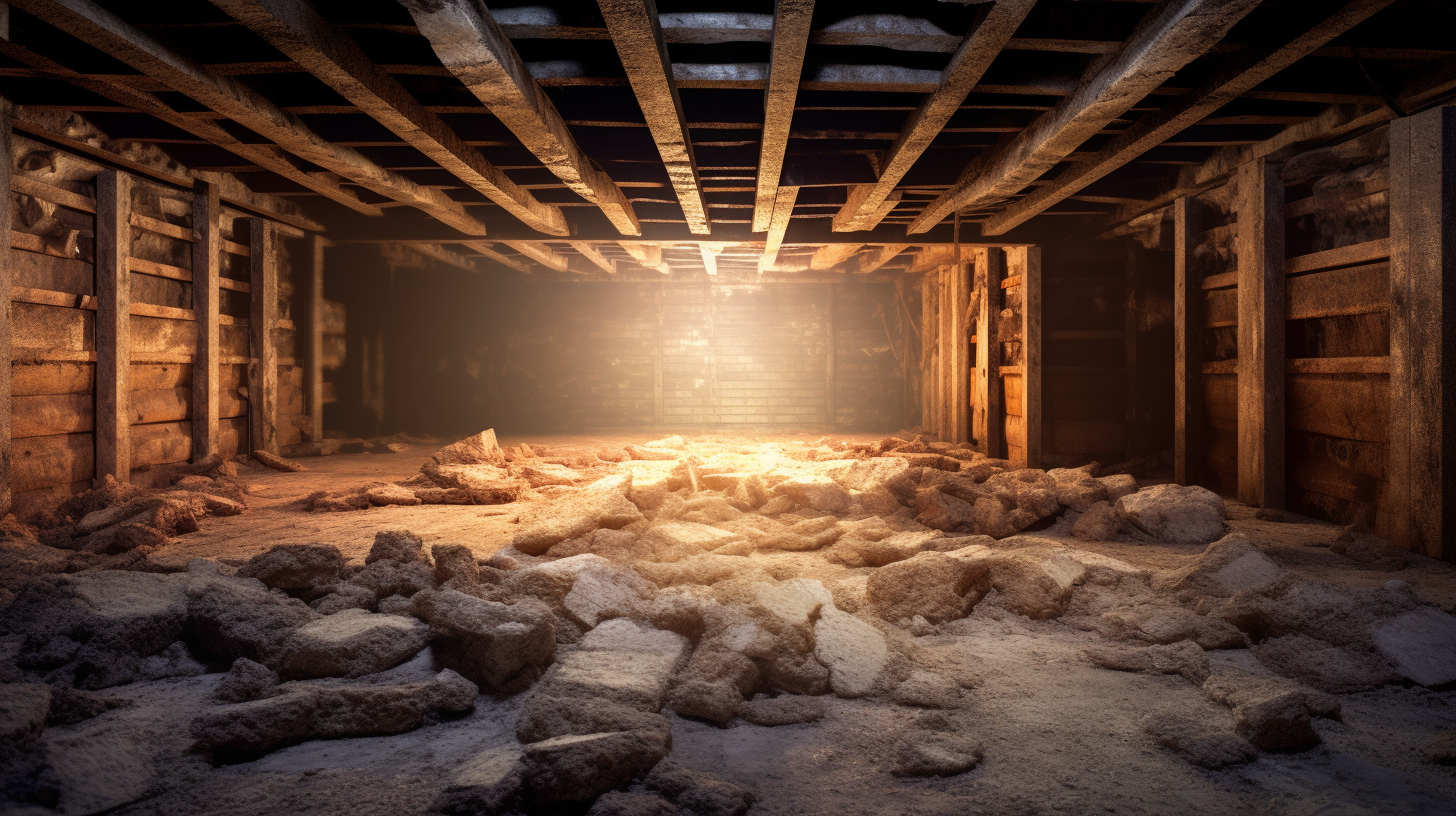Beneath the floors of our homes lies a critical yet often overlooked component of our living environment—the crawl space. This hidden area, while out of sight, should never be out of mind, especially when considering the health and structural integrity of our homes. Effective crawl space ventilation plays a pivotal role in preventing moisture accumulation, deterring pests, and ensuring the longevity of our homes. However, the key to unlocking these benefits lies in the careful selection of the appropriate vents, a decision that can significantly impact the effectiveness of ventilation strategies.
The importance of choosing the right vents for crawl space ventilation cannot be overstated. With the myriad of venting options available on the market, each designed to address specific environmental conditions and architectural considerations, homeowners are faced with the challenge of determining which vents best suit their needs. This blog delves into the heart of crawl space ventilation, exploring why the selection of vents is a critical decision that goes beyond mere aesthetics or cost.
From understanding the basics of air flow dynamics in crawl spaces to evaluating the pros and cons of different vent types, this guide aims to equip homeowners with the knowledge needed to make informed decisions. Whether you're contending with high humidity levels, seeking to improve air quality, or looking to enhance energy efficiency, the choice of vents plays a crucial role in achieving your goals.
Join us as we navigate the complexities of crawl space ventilation, offering insights and practical advice to ensure your home remains a safe, comfortable, and durable living space. By the end of this guide, you'll understand the importance of selecting the appropriate vents for your crawl space and how this choice can influence the overall health of your home.
Understanding Ventilation Needs
Proper ventilation is crucial for maintaining the health and integrity of your home's crawl space, which in turn affects the overall well-being of your living environment. Assessing your crawl space's specific needs and identifying clear ventilation goals are essential steps in developing an effective strategy. This guide will help you navigate these initial stages, ensuring that your ventilation efforts are both efficient and tailored to your home's unique requirements.
Assessing Your Crawl Space
Size and Layout Considerations: The size and layout of your crawl space play a significant role in determining your ventilation needs. Larger crawl spaces may require more vents or a mechanical ventilation system to achieve adequate air flow. The layout, including the number of walls and the presence of obstructions, can also impact how effectively air can circulate throughout the space.
Climate and Environmental Factors: Climate plays a critical role in shaping your ventilation strategy. Homes in humid climates may need more aggressive moisture control measures, while those in colder regions might prioritize temperature regulation to prevent pipes from freezing. Environmental factors, such as the home's proximity to water bodies or areas prone to flooding, can also influence the type of ventilation system required.
Identifying Ventilation Goals
Moisture Control: One of the primary goals of crawl space ventilation is to control moisture levels, preventing the growth of mold and mildew and protecting the home's structural elements from water damage. Identifying areas of moisture accumulation and understanding their sources are key to selecting the right ventilation solution.
Temperature Regulation: Maintaining a stable temperature in the crawl space can help improve the overall energy efficiency of your home. Ventilation can prevent excessive heat buildup during summer and reduce the risk of pipes freezing in winter, contributing to a more comfortable living environment.
Air Quality Improvement: The air quality in your crawl space directly impacts the air quality in your living spaces above. Effective ventilation can reduce the concentration of harmful pollutants, including radon gas, volatile organic compounds (VOCs), and allergens, promoting a healthier indoor environment.
Types of Crawl Space Vents
Ensuring proper ventilation in your crawl space is crucial for maintaining the health of your home. It prevents moisture buildup, deters pests, and helps maintain structural integrity. Among the options available for crawl space ventilation, homeowners typically choose between manual and automatic vents, each with its unique operation method and set of benefits and drawbacks.
Manual Vents
Description and Operation: Manual vents, also known as passive vents, are simple openings placed around the crawl space's perimeter. These vents allow air to flow naturally in and out of the crawl space, relying on wind and natural air pressure differences to facilitate ventilation. Homeowners manually open or close these vents based on the season or weather conditions to control airflow.
Pros:
- Cost-Effective: Manual vents are inexpensive to install and maintain, making them a budget-friendly option for homeowners.
- Simple Operation: Their straightforward design means there are no mechanical parts to maintain or replace, reducing long-term care requirements.
- Energy Efficiency: Because they do not require electricity to operate, manual vents can help conserve energy.
Cons:
- Requires Manual Adjustment: Homeowners must remember to open or close these vents at appropriate times, which can be inconvenient and lead to suboptimal ventilation if forgotten.
- Limited Moisture Control: In humid climates or during rainy seasons, manual vents might not adequately prevent moisture buildup, as they cannot adjust automatically to changing environmental conditions.
- Potential Security Risk: Open vents can be entry points for pests unless properly screened.
Automatic Vents
Description and Operation: Automatic vents, or powered vents, include a thermostat and/or humidistat that triggers the vent to open or close based on preset humidity levels or temperatures. This automation ensures that the crawl space is ventilated optimally without manual intervention, adjusting to environmental changes in real-time.
Pros:
- Responsive Moisture Control: Automatic vents can effectively manage moisture levels by adjusting to the climate conditions, reducing the risk of mold and wood rot.
- Convenience: The automated operation eliminates the need for homeowners to manually adjust vents, ensuring consistent ventilation without effort.
- Enhanced Pest Control: Many automatic vents are designed to close tightly when not in operation, helping to prevent pest entry.
Cons:
- Higher Initial Cost: The complexity of automatic vents makes them more expensive to purchase and install compared to manual vents.
- Energy Usage: Since these vents are powered, they will contribute to the home's overall energy consumption.
- Maintenance Requirements: Automatic vents have mechanical and electrical components that may require maintenance or replacement over time.
Factors to Consider When Choosing Vents
Selecting the right vents for your crawl space is a critical decision that can significantly impact the effectiveness of your home's ventilation system, its ability to control moisture, and ultimately, the health of your home. Among the key factors to consider are the local climate and environmental conditions, as well as the materials and durability of the vents themselves. Understanding these aspects can help homeowners make informed choices that align with their specific needs and environmental challenges.
Climate and Environmental Conditions
Impact on Vent Choice: The local climate plays a pivotal role in determining the most appropriate type of vent for your crawl space. Areas with high humidity levels require vents that can effectively manage moisture to prevent mold growth and wood rot. Conversely, in dry climates, the focus may be on preventing excessive dryness that can lead to cracking and splitting of wooden structures.
Special Considerations for Extreme Climates:
- High Humidity: In regions with high humidity, choosing vents with moisture control capabilities, such as automatic vents equipped with humidistats, can be particularly beneficial.
- Cold Climates: For homes in colder regions, insulated vents or vent systems that can be closed during winter months help prevent cold air from entering the crawl space and affecting the home's heating efficiency.
- Hot and Dry Climates: In hot, dry areas, ensuring adequate airflow while preventing the ingress of hot air that can dry out crawl space materials is crucial. Vents with adjustable covers may offer a solution.
Material and Durability
Common Materials: Vents are commonly constructed from materials such as aluminum, plastic (PVC), stainless steel, and galvanized steel. Each material offers different benefits in terms of strength, resistance to corrosion, and aesthetic appeal.
- Aluminum: Lightweight and resistant to rust, making it suitable for most climates.
- Plastic (PVC): Offers excellent resistance to moisture and decay, ideal for humid regions.
- Stainless Steel: Highly durable and resistant to corrosion, but more expensive.
- Galvanized Steel: Offers good durability at a lower cost than stainless steel, but may be prone to rust over time in humid conditions.
Considerations for Longevity and Maintenance:
- Resistance to Corrosion: Choosing materials that resist corrosion is crucial in humid climates or areas with salt air to ensure the longevity of the vents.
- Maintenance Needs: Consider the maintenance required to keep the vents in good condition. Plastic vents may require less maintenance than metal vents, which might need periodic painting or treatment to prevent rust.
- Impact on Home Aesthetics: The material and design of the vents should complement the home's exterior. Some materials and designs may offer more aesthetic appeal but could come with higher costs or maintenance requirements.
Innovations in Vent Technology
As homeowners increasingly seek ways to enhance the efficiency, comfort, and health of their living environments, innovations in vent technology have risen to meet these demands. Among the most notable advancements are smart vents and energy-efficient solutions, each offering unique benefits that extend beyond traditional ventilation capabilities. These innovations not only improve the functionality of home ventilation systems but also contribute to more sustainable and cost-effective home management practices.
Smart Vents and Automation
Overview of Smart Vent Technology: Smart vents represent a significant leap forward in home ventilation technology. Equipped with sensors and powered by intelligent software, these vents automatically adjust airflow to different areas of the home based on real-time data, such as temperature, humidity levels, and occupancy. This capability allows for precise control over the indoor climate, enhancing comfort and improving air quality.
Benefits of Integrating with Home Automation Systems:
- Customized Climate Control: Smart vents can be integrated with home automation systems, enabling homeowners to customize and control the climate in each room through a smartphone app or voice commands, ensuring optimal comfort levels throughout the home.
- Improved Energy Efficiency: By directing airflow only to areas that need it, smart vents reduce energy waste, contributing to lower heating and cooling costs and enhancing the overall energy efficiency of the home.
- Enhanced Indoor Air Quality: Integration with home automation systems allows for the monitoring and adjusting of air quality indicators, such as humidity and pollutant levels, ensuring a healthier living environment.
Energy-Efficient Solutions
Vents Designed for Energy Conservation: Beyond smart technology, other innovations in vent design focus on maximizing energy conservation. These include vents with improved sealing capabilities, materials that provide better insulation, and designs that optimize airflow to reduce the energy required for heating and cooling.
Long-term Cost Savings and Environmental Impact:
- Reduced Utility Bills: Energy-efficient vents contribute to significant long-term cost savings by minimizing the amount of energy needed to maintain comfortable indoor temperatures, directly impacting utility bills.
- Lower Environmental Footprint: By reducing energy consumption, these vent solutions not only save homeowners money but also contribute to a lower environmental footprint, aligning with broader sustainability goals and efforts to combat climate change.
Installation and Placement Best Practices
Ensuring the health and efficiency of your home's ventilation system starts with proper installation and strategic placement of vents. Whether you're upgrading your system or installing a new one, understanding the best practices for vent placement and installation can significantly impact the system's effectiveness and your home's overall comfort. This guide covers essential strategies for optimal vent placement, highlights common mistakes to avoid, and offers guidance on when to consider professional installation versus taking a DIY approach.
Proper Vent Placement
Strategies for Optimal Airflow and Efficiency:
- Even Distribution: Place vents evenly around the home to ensure balanced airflow, preventing areas of stagnant air which can lead to moisture buildup and uneven temperatures.
- High and Low Placement: For natural ventilation, consider placing vents both high and low within a space. This allows cooler air to enter through lower vents and warmer air to exit through higher ones, promoting effective air circulation.
- Avoid Obstructions: Ensure that vents are not obstructed by furniture, landscaping, or other barriers that could restrict airflow. Proper clearance allows for the free movement of air into and out of the vent.
- Consider Climate and Environmental Factors: Placement should also take into account local climate conditions. For example, in areas prone to flooding, vents should be placed above expected flood levels to prevent water intrusion.
Common Mistakes to Avoid:
- Overlooking Insulation: Failing to properly insulate around vent openings can lead to energy loss and reduce the system's efficiency.
- Ignoring Manufacturer's Recommendations: Each vent system comes with specific installation guidelines that should be followed to ensure optimal performance.
- Neglecting Local Building Codes: Always ensure that vent placement and installation comply with local building codes and regulations.
Professional Installation vs. DIY
When to Hire a Professional:
- Complex Systems: For advanced systems, especially those involving mechanical components or integration with HVAC systems, professional installation ensures that the system is set up correctly and operates efficiently.
- Building Code Compliance: Professionals are familiar with local building codes and can ensure that your installation meets all legal requirements.
- Safety Concerns: If installation involves working in confined spaces or with electrical wiring, hiring a professional can prevent potential injuries.
Tips for DIY Installation:
- Educate Yourself: Thoroughly research the type of vents you are installing and familiarize yourself with the process before beginning.
- Gather the Right Tools: Ensure you have all the necessary tools and materials for the job to avoid delays and ensure a smooth installation process.
- Measure Twice, Install Once: Careful measurement and planning can prevent mistakes and ensure that vents are placed for maximum efficiency.
- Seek Advice When Needed: Don't hesitate to consult with professionals or seek advice from home improvement stores if you encounter challenges during the installation process.
FAQs
Contact Trench Guys Today!
Trench Guys will do everything we can to ensure your experience with us is excellent.
Request A FREE Estimate
Request a Free Estimate Form
Checkout Recent Post




Got a Question? We’re Here to Help.
You can arrange an appointment or make an enquiry by phone or email, orget in touch to us via our contact form.



